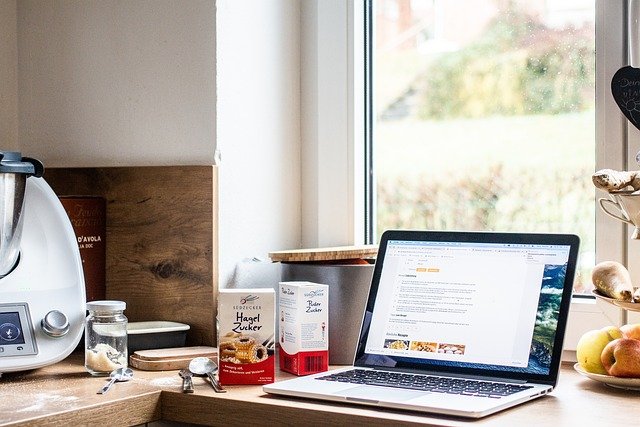How Air Fryers Work and What to Consider Before Buying
Discover a variety of modern air fryer options designed to simplify your cooking experience. From compact models to versatile units, these appliances offer practical solutions for preparing meals efficiently while fitting seamlessly into any kitchen setup.

The technology behind air fryers is simpler than many people realize. These appliances work by circulating hot air at high speeds around food, creating a crispy exterior similar to deep frying but with minimal oil. A heating element and powerful fan work together to distribute heat evenly, cooking food from all angles. This method reduces fat content in meals while maintaining taste and texture, making it an attractive option for those looking to prepare healthier versions of traditionally fried foods.
Air fryers come in various sizes and configurations, each designed to meet different household needs. Understanding the available options helps narrow down choices based on kitchen space, cooking habits, and family size. From basic models to advanced units with digital controls, the market offers solutions for nearly every preference and budget.
What Makes Compact Air Fryers Suitable for Small Kitchens?
Space constraints are a reality for many home cooks, particularly those living in apartments or homes with limited counter space. Compact air fryers address this challenge by offering full cooking functionality in a smaller footprint. These models typically have capacities ranging from 2 to 4 quarts, which is sufficient for preparing meals for one or two people.
Despite their smaller size, compact units maintain the core technology that makes air frying effective. They heat up quickly and cook food evenly, though batch cooking may be necessary for larger portions. Many compact models also feature vertical designs that minimize counter space usage while maximizing cooking capacity. Storage is simplified as well, with some units small enough to fit in standard kitchen cabinets when not in use.
The trade-off with compact models involves cooking capacity rather than performance. While they excel at preparing individual portions or side dishes, families of three or more may find themselves cooking in multiple batches. However, for singles, couples, or those with minimal kitchen space, these smaller units provide an ideal balance of functionality and convenience.
How Do Air Fryers With Multi-Cooking Functions Expand Kitchen Capabilities?
Modern air fryers have evolved beyond single-purpose appliances. Multi-cooking functions transform these devices into versatile kitchen tools capable of roasting, baking, grilling, and even dehydrating. This versatility reduces the need for multiple appliances, saving both space and money.
Units with multi-cooking capabilities typically include preset programs for common foods like chicken, fish, vegetables, and baked goods. These presets automatically adjust temperature and cooking time, removing guesswork from meal preparation. Some advanced models also feature rotisserie functions, allowing users to prepare whole chickens or other large cuts of meat with even browning and crisping.
The learning curve for multi-function models is generally minimal. Digital interfaces guide users through various cooking modes, and many manufacturers provide recipe books or apps with detailed instructions. This functionality appeals to both novice cooks seeking simplicity and experienced home chefs looking to experiment with new cooking techniques.
Why Consider Energy-Efficient Air Fryer Models?
Energy consumption is an increasingly important factor in appliance selection. Energy-efficient air fryer models use less electricity than conventional ovens while cooking food faster. The compact cooking chamber heats up quickly and maintains temperature with less energy, resulting in lower utility costs over time.
Most air fryers consume between 800 and 1500 watts, significantly less than a standard oven that typically uses 2000 to 5000 watts. The shorter cooking times further reduce energy usage. For example, cooking frozen french fries in an air fryer takes approximately 15 minutes compared to 25-30 minutes in a conventional oven, using roughly half the energy.
Some manufacturers design models with enhanced insulation and more efficient heating elements, further reducing energy consumption. While these units may carry a slightly higher upfront cost, the energy savings accumulate over the appliance’s lifespan. For environmentally conscious consumers or those looking to reduce household expenses, energy efficiency represents a meaningful consideration.
When evaluating air fryer options, understanding the pricing landscape helps set realistic expectations. Entry-level compact models typically range from $40 to $80, offering basic air frying functions in smaller capacities. Mid-range units with multi-cooking capabilities and larger capacities generally cost between $80 and $150. Premium models with advanced features, digital controls, and specialty functions can range from $150 to $300 or more.
| Product Type | Typical Capacity | Key Features | Cost Estimation |
|---|---|---|---|
| Basic Compact Model | 2-3 quarts | Simple controls, single function | $40-$80 |
| Mid-Range Multi-Function | 4-6 quarts | Digital controls, multiple presets | $80-$150 |
| Premium Large Capacity | 6-10 quarts | Advanced features, rotisserie, dehydrator | $150-$300+ |
| Energy-Efficient Model | 4-6 quarts | Enhanced insulation, efficient heating | $100-$200 |
Prices, rates, or cost estimates mentioned in this article are based on the latest available information but may change over time. Independent research is advised before making financial decisions.
Brand reputation, warranty coverage, and customer reviews also influence value. Some manufacturers offer extended warranties or customer support services that justify higher prices. Seasonal sales and promotions can provide opportunities to purchase quality models at reduced prices, particularly during major shopping events.
Selecting an air fryer involves balancing multiple factors including kitchen space, household size, desired features, and budget. Compact models serve small kitchens and individuals well, while multi-function units provide versatility for varied cooking needs. Energy-efficient designs offer long-term savings and environmental benefits. By understanding these considerations and researching available options, consumers can find appliances that enhance their cooking experience while fitting seamlessly into their daily routines. The right choice ultimately depends on individual priorities and how the appliance will be used in day-to-day meal preparation.




